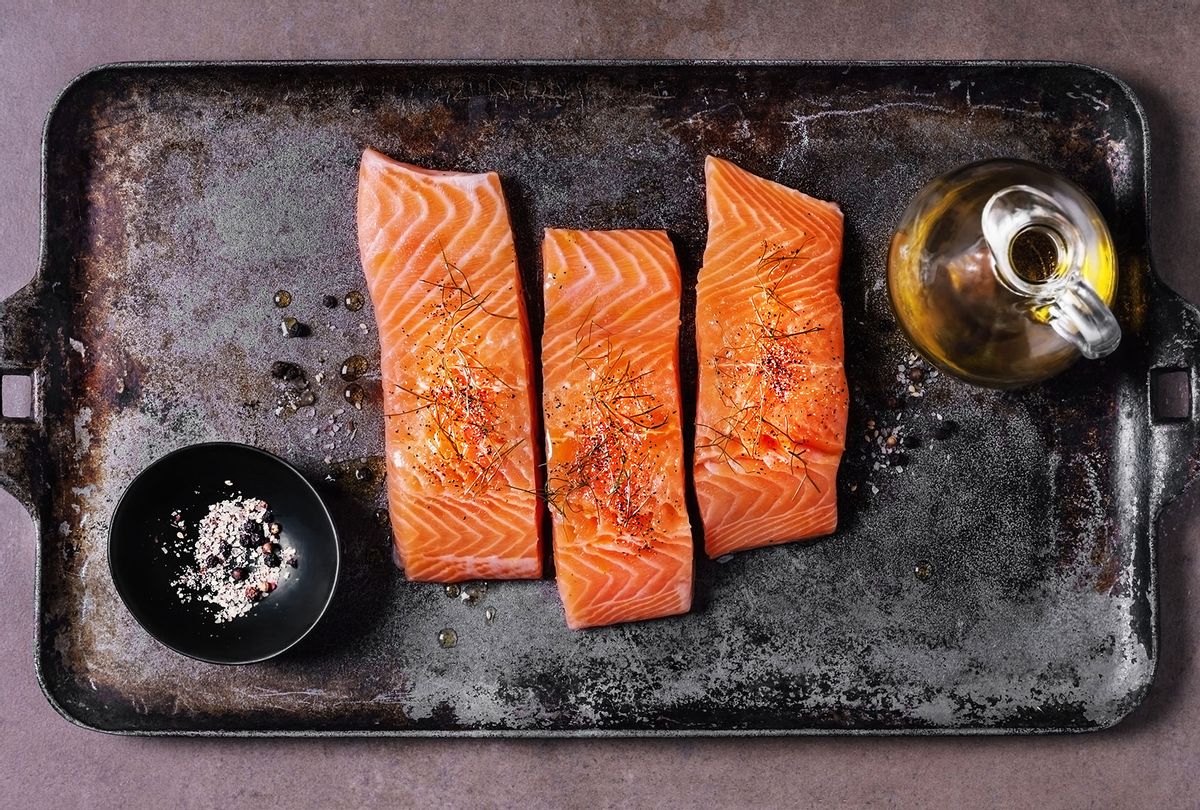Should you make Stephen King’s viral microwave salmon recipe for dinner? An expert weighs in

Stephen King has written what some would consider a new, tweet-length horror story.
“Dinner: Get a nice salmon filet at the supermarket, not too big,” the “It” and “Carrie” author wrote on Twitter. “Put some olive oil and lemon juice on it. Wrap it in damp paper towels. Nuke it in the microwave for 3 minutes or so. Eat it. Maybe add a salad.”
Some commenters began to express disgust at the suggestion, saying that it was college dorm cooking at best and a form of cat food at worst. Even actress Patricia Arquette jumped into the fray with a warning about potential chemicals in paper towels.
Others, however, didn’t seem turned off by King’s recipe, stating that the paper towel would likely keep the salmon moist. Not to mention, the prospect of having dinner on the table in three minutes seemed appealing.
Related: A 3-ingredient marinade for sheet pan salmon that gets dinner on the table in no time
I was on the fence. After all, microwave cooking — which has long been derided as lazy or even dangerous — has enjoyed something of a renaissance. Famed chef David Chang is an outspoken proponent of using the appliance, enough so that he co-wrote the cookbook “Cooking at Home: Or, How I Learned to Stop Worrying About Recipes (And Love My Microwave)” with the New York Times’ Priya Krishna and struck up a partnership with Anyday, a company that produces microwave-safe cookware.
Last year, New Yorker writer Helen Rosner published a beautiful story called “How to Cook with Your Microwave” about how she overcame the culturally ingrained perception that microwave cooking was somehow less legitimate than other forms of cooking.
“I found myself, at the height of the sweltering, mostly indoors summer, facing down a pair of snapper fillets,” Rosner wrote. “I couldn’t so much as bring myself to light a burner on the stove for a quick sauté; I swear the microwave winked at me from its mount above the stove. Three minutes at full power (patted dry, topped with strips of julienned ginger, set in a glass dish tightly covered with plastic wrap) and those snowy wings of fish were gorgeously cooked, silken and tender, ready to be drizzled with soy sauce and sesame oil and zapped for another minute, with scallions to finish.”
Want more great food writing and recipes? Subscribe to Salon Food’s newsletter.
She continued, “It was so fast, and so flawless, that it almost felt wrong.”
Wrong, perhaps, like King’s salmon? To get a definitive answer, I reached out to Institute of Culinary Education chef-instructor Joshua Resnick for his take on the preparation method. He wouldn’t classify it as outright wrong, though perhaps not ideal.
“Microwaves naturally produce steam, so that, in addition to covering the salmon with a wet paper towel, would produce an environment that can steam the salmon properly,” Resnick said. “The lemon juice would also help steam and add flavor. Stephen King’s method would technically work, but it is not something I would do or recommend.”
Stephen King’s method would technically work, but . . .
One issue with this method, Resnick said, is that it takes place in an enclosed environment.
“When cooking in a pan, on the stove or in the oven, you can open the door. You have more control over the cooking process because you can engage all of your senses,” he said. “You can feel the texture of a protein, see if it’s denaturing, smell it cooking, hear if the skin is crisping . . . Additionally, if the skin is on the salmon, it will be impossible to get crispy skin — which is one of the best preparations for skin-on fish.”
That said, Resnick did offer a tip for folks eager to try King’s method at home. Much like stoves, you can adjust the heat on your microwave so you don’t have to cook it on full power all the time.
“Use the power levels to reheat and cook foods more evenly, so you don’t end up with a hot exterior and frozen interior,” he said.
Some of our favorite 2- and 3-ingredient recipes:

